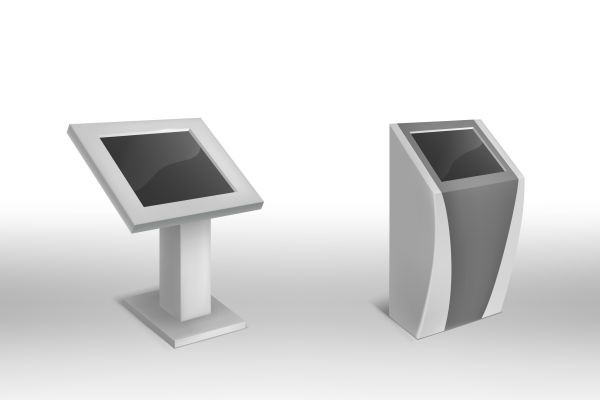Have you ever approached a kiosk, hoping to view a clear, vibrant display, only to be met with dim or distorted visuals? Whether it’s in a brightly lit shopping mall, a dimly lit corner of an office building, or outdoors under the glaring sun, kiosks often struggle to deliver a consistent visual experience. But what if there was a solution to this problem, offering perfect clarity and vivid detail no matter the lighting conditions? Enter HDR USB cameras—a game-changer for kiosk displays. In this blog, we will explore how these cameras enhance user experience and solve a longstanding pain point for both customers and kiosk operators.
The Challenge of Display Quality in Various Lighting Conditions
Kiosks are increasingly integrated into various industries, including retail, hospitality, and transportation, to provide self-service options for customers. While these kiosks are designed to be interactive and visually engaging, one common problem is inconsistent display quality. The ambient lighting in the environment directly impacts how kiosk screens appear, especially in areas with fluctuating natural or artificial light.
For instance, in bright spaces like shopping malls, sunlight can wash out a screen, making it difficult to read or interact with the kiosk. On the flip side, kiosks placed in dimly lit areas often suffer from low contrast and poor visibility. This inconsistent visual performance leads to frustrated users, poor engagement, and even reduced sales in retail environments.
Furthermore, when kiosks are deployed outdoors, their displays face additional challenges, such as direct sunlight or harsh shadows. These variations can result in a degraded user experience that diminishes the effectiveness of the kiosk. Traditional cameras or sensors are often unable to compensate for these lighting fluctuations, leaving users with lackluster experiences.
How HDR USB Cameras Solve the Problem
High Dynamic Range (HDR) technology is known for its ability to capture a broader range of light, from deep shadows to bright highlights. HDR USB cameras leverage this technology, providing exceptional image quality that adjusts to any lighting condition. By incorporating an HDR USB camera into kiosk systems, operators can overcome the limitations of traditional display technologies and ensure that their screens are always clear and vibrant.
Benefits of HDR USB Cameras for Kiosk Displays
-
Enhanced Visibility in Challenging Lighting
HDR USB cameras can automatically adjust to varying light conditions, ensuring that the kiosk display remains visible regardless of surrounding lighting. Whether it’s a brightly lit store window or a shaded area indoors, HDR cameras balance the light levels, producing a crystal-clear image that’s easy to read. This technology makes kiosks more reliable and user-friendly, enhancing the overall customer experience. -
Consistent Color Accuracy
Unlike traditional cameras, HDR USB cameras retain color accuracy across a wide range of lighting scenarios. This is particularly important in retail kiosks where product colors must appear true to life to help customers make informed purchasing decisions. With HDR, kiosks can provide vibrant, true-to-life colors that engage users and improve the perception of the displayed products. -
Improved Contrast for Detailed Images
HDR USB cameras excel at enhancing the contrast between light and dark areas of the screen. This creates a more dynamic visual experience, where text remains sharp and easily readable even in low-light environments. In high-contrast settings, such as outdoor kiosks or locations with fluctuating light conditions, HDR technology ensures that dark areas aren’t lost in shadow while bright highlights don’t get washed out, providing optimal visual clarity. -
Versatility Across Locations
No matter where a kiosk is placed—whether in a sunny shopping mall, a dark corner, or an outdoor space—HDR USB cameras can adapt. This versatility means kiosk operators no longer need to worry about positioning their kiosks in specific lighting conditions. The technology allows for better performance in any setting, making kiosks more effective in attracting and engaging users across a wide variety of environments.
Customer Pain Points Addressed by HDR USB Cameras
For many kiosk operators, the challenge lies in ensuring their kiosks remain functional and effective across various lighting environments. Let’s take a closer look at the pain points these operators face and how HDR USB cameras provide the solutions.
Pain Point 1: Low Engagement Due to Poor Visuals
A major issue many kiosk operators face is the lack of engagement from users when the display is difficult to read. In brightly lit or dimly lit environments, the display may be washed out or hard to interpret, leading users to walk away frustrated. This can significantly reduce the effectiveness of kiosks, especially in settings like retail stores, airports, and transportation hubs.
Solution:
By incorporating HDR USB cameras into kiosk systems, operators can ensure that the visual quality of their screens remains optimal. The ability to automatically adjust to changing lighting conditions boosts user engagement, as customers can easily interact with the kiosk without straining their eyes or being distracted by poor display quality.
Pain Point 2: Operational Inconsistencies
Kiosk systems in environments with unpredictable lighting can be a logistical nightmare for operators. It’s not always possible to control the lighting in a space, which means that the kiosk’s performance can vary greatly depending on the time of day or position within the environment. This leads to inconsistent user experiences, which may cause some customers to avoid using the kiosk altogether.
Solution:
HDR USB cameras automatically adjust to lighting changes, ensuring consistent performance across all settings. Whether a kiosk is situated near a large window with direct sunlight or in a dark corner with little light, the camera’s adaptive capabilities guarantee a steady and reliable visual output.
Pain Point 3: Increased Maintenance Costs
Kiosk operators often spend a considerable amount of money maintaining and adjusting their systems to ensure they perform well in different lighting conditions. This includes adjusting screen brightness, recalibrating sensors, or even relocating kiosks to different spots to avoid issues with glare or shadows.
Solution:
With HDR USB cameras, operators can eliminate the need for constant adjustments. The technology ensures that kiosks provide the same high-quality visual experience in any lighting, reducing the need for ongoing maintenance or system reconfigurations. This not only saves time and money but also streamlines the overall management of kiosk networks.
Transforming User Experience with HDR USB Cameras
The integration of HDR USB cameras into kiosk systems revolutionizes the way users interact with these self-service devices. By ensuring that kiosk displays remain vibrant and clear in any lighting, customers can engage with the system seamlessly, whether they are browsing products, ordering food, or accessing information. The enhanced visuals foster a more immersive and enjoyable experience, which leads to higher satisfaction, increased engagement, and even more transactions.
Beyond the visual benefits, the improved performance of kiosks powered by HDR USB cameras enhances the overall credibility of businesses. Customers are more likely to trust and engage with kiosks that deliver high-quality interactions, making HDR technology an essential feature for businesses aiming to provide top-tier customer service.
A Brighter, Clearer Future for Kiosk Displays
In conclusion, HDR USB cameras offer a powerful solution for kiosk operators seeking to overcome the challenges of varying lighting conditions. By enhancing visibility, improving contrast, and maintaining color accuracy, these cameras ensure that kiosks deliver a premium visual experience in any setting. For businesses looking to boost customer satisfaction and engagement, integrating HDR USB cameras into their kiosk systems is a step toward creating memorable, immersive user experiences.


